
Climate change is forecast to trigger the mass migration of millions of people over the coming decades, but are these predictions really accurate? Chris Fitch investigates
By
The year is 2050. Floods, cyclones and storm surges have made many existing coastal regions uninhabitable. The combined forces of severe drought, soil erosion, desertification and even saltwater intrusions have caused multiple harvest failures, especially in poorer, developing nations. Food and water shortages threaten billions. Many low-lying islands face the possibility of complete elimination. Consequently, 150 million or more desperate and impoverished ‘environmental refugees’ have been driven from their homes.
It’s not hard to imagine this dire scenario – now so familiar from apocalyptic news reports and disaster movies – given the media narratives commonly deployed on this topic. ‘Climate change “will create world’s biggest refugee crisis”’, ‘UK warned of “climate change flood of refugees”’, and ‘Climate change will stir “unimaginable” refugee crisis, says military’, are just a few examples of headlines that have appeared in British newspapers in recent years. A New York Times feature this summer was titled: ‘The Great Climate Migration Has Begun’.
Stay connected with the Geographical newsletter!
In these turbulent times, we’re committed to telling expansive stories from across the globe, highlighting the everyday lives of normal but extraordinary people. Stay informed and engaged with Geographical.
Get Geographical’s latest news delivered straight to your inbox every Friday!
The chemistry of the Earth’s atmosphere is undoubtedly changing. Last year saw 33.2 gigatonnes of carbon dioxide enter the atmosphere thanks to human activity, a stubbornly large quantity that’s unlikely to drop significantly in 2020, despite the wide-ranging shutdowns caused by the pandemic. In May this year, the pioneering Mauna Loa Observatory in Hawaii recorded a record high of 417.1 ppm (parts per million) of atmospheric CO2, far above the supposedly ‘safe’ level of 350 ppm and increasing at a steady two to three ppm annually.
Average atmospheric temperatures are rising and ice sheets are destabilising accordingly. Without a change in direction – even with an unlikely reduction in emissions to comply with the demands of the 2015 Paris Agreement – there are anticipated to be a great many radical changes to the global climate and the average sea level in the coming decades. An estimated one billion people live on land that is less than ten metres above current high tide levels (for 230 million individuals, it’s less than one metre) making them especially vulnerable to sea-level rise, extreme weather and other potential consequences of global climate change.
Is the eventual mass movement of millions of so-called ‘climate refugees’ therefore an unavoidable consequence of climate change? Is the international community prepared for such a scenario? If not, what action could be taken now to prevent a full-blown humanitarian crisis?
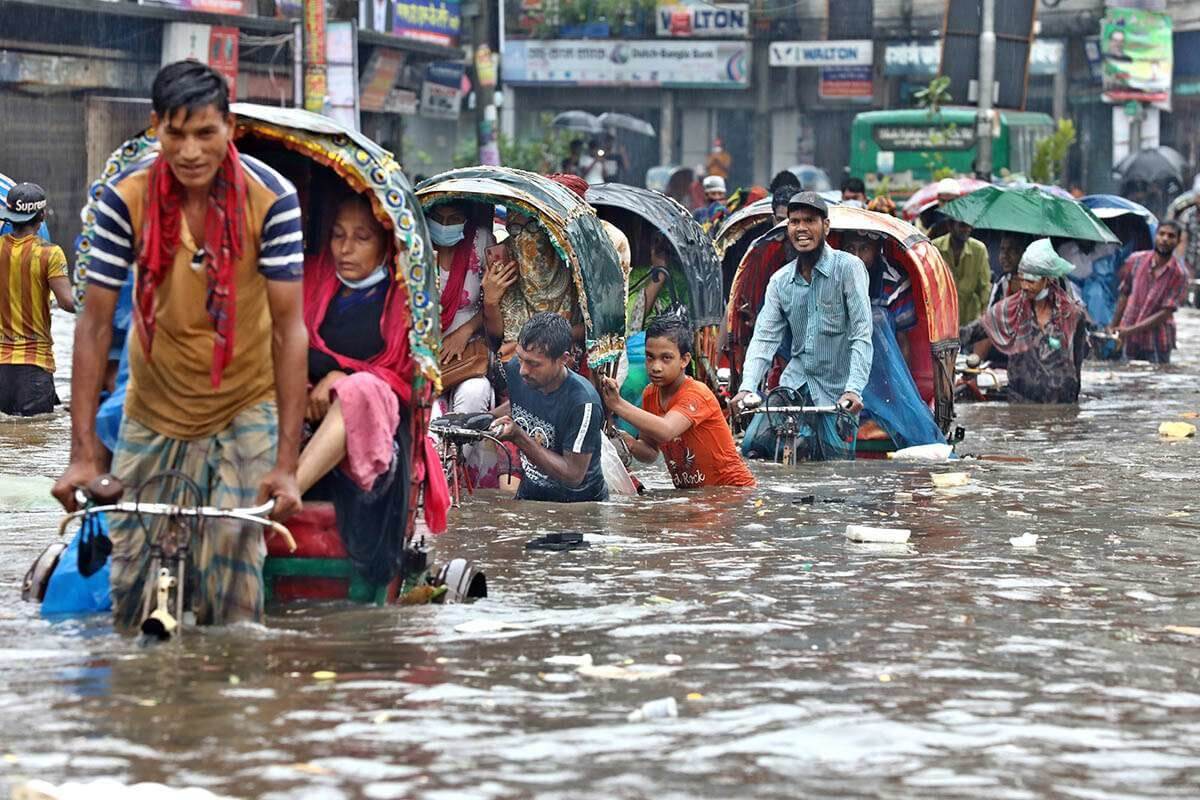
Straight to the source
The pessimistic scenario described at the beginning of this feature was outlined in depth nearly three decades ago in a report published in 1993 in the journal BioScience with the evocative title Environmental Refugees in a Globally Warmed World. The author, Norman Myers, then a professor at the University of Oxford, wasn’t the first to apply the ‘refugee’ term to the topic, but he was the first to forecast that such large numbers of people would be affected.
‘It requires a leap of the imagination to envisage 150 million destitutes abandoning their homelands, many of them crossing international borders,’ wrote Myers, who passed away in October last year. ‘In a greenhouse-affected world of the future, they are likely to become a prominent feature of our one-Earth landscape due to the burgeoning phenomenon of environmental displacement.’
Myers’ figures certainly caught people’s attention. His prediction has been referenced in multiple influential documents, including those produced by the IPCC (Intergovernmental Panel on Climate Change) and in the UK government’s 2006 report: The Economics of Climate Change: The Stern Review. If you’ve ever seen a statistic such as this, predicting some hundreds of millions of environmental or climate refugees, chances are it can be traced either directly or indirectly back to Myers. It may therefore seem surprising that his estimates were fairly rough.
‘When Norman Myers’ studies first came out, he was making these projections on the back of an envelope in many cases,’ says Robert McLeman from Wilfrid Laurier University in Canada. ‘That’s maybe exaggerating a little, but it was rough estimates of how many people live in such and such locations; how many people already move; if it moves in this trajectory, what would be the increase; and so on. He ballparked hundreds of millions of people – 200 million by mid-century was his most often cited figure. Of course, now it’s 2020, mid-century isn’t all that far off .
‘I’ll be the first to admit that when I first read those numbers, I thought, “It’s a little bit on the high side – sounds a little bit alarmist’,’’ continues McLeman. ‘But as time passes, I’m starting to agree with him, in the sense that we will be extremely lucky if it’s only tens of millions of people who have to move because of climate change and the increased frequency of extreme weather events. It’s not a hypothetical, this is an actual.’
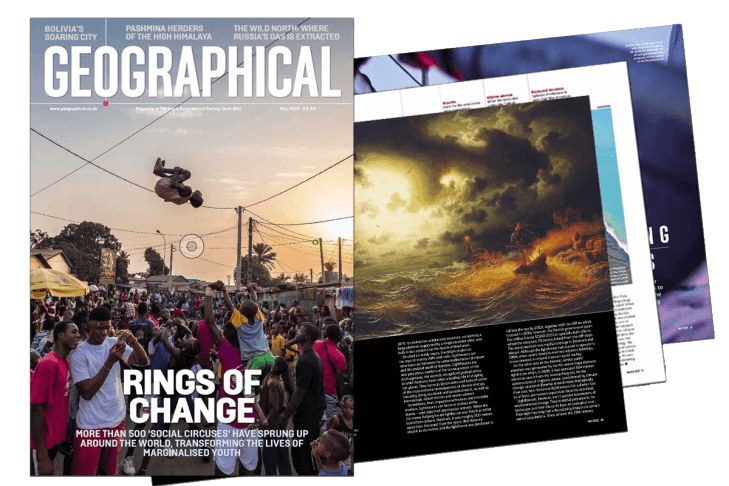
Subscribe to our monthly print magazine!
Subscribe to Geographical today for just £38 a year. Our monthly print magazine is packed full of cutting-edge stories and stunning photography, perfect for anyone fascinated by the world, its landscapes, people and cultures. From climate change and the environment, to scientific developments and global health, we cover a huge range of topics that span the globe. Plus, every issue includes book recommendations, infographics, maps and more!
Myers liked to emphasise the ‘heroic extrapolations’ his forecasts were undertaking; his 1993 paper included the caveat: ‘Even if the overall total were too high by one third, or 50 million people, this refugee problem would still be of altogether unprecedented scale.’ Nevertheless, they remain some of the highest profile and frequently referenced predictions for what will happen to vulnerable people as climate change continues to become more extreme. Subsequent reports have gone even further, boldly forecasting up to one billion migrants being created due to climate change, a figure quoted by the UN’s International Organisation for Migration, and even an incredible two billion by 2100, according to a study by researchers at New York’s Cornell University. Just this summer, the inaugural Ecological Threat Register, a report by the Institute for Economics and Peace, predicted the displacement of 1.2 billion people by 2050, primarily due to environmental disasters, and claimed that, since 2008, there have already been 288 million displacements caused by natural disasters.
Understanding numbers
‘I mean, what do you do with those big numbers anyway?’ asks Helen Adams, a lecturer in disaster risk reduction and climate change adaptation at King’s College London. Among other things, she highlights the complexity behind the forecasts produced by migration models, including those exploring environmental changes. ‘Models are useful to understand dynamics, not to project the future,’ she says.
As she points out, models that try to produce accurate numbers of prospective climate refugees lean on a theory widely embraced in economics which holds that people gravitate towards more populous locations, such as big cities. ‘It makes sense and it does hold true, but it’s by no means a prediction of the future,’ says Adams.
‘This urge to get these estimates sometimes bothers me a bit,’ says Ingrid Boas, an associate professor in the Environmental Policy Group at Wageningen University in the Netherlands. ‘There’s so much of a push to search for numbers and to search for direct connections between climate change and migration. Sometimes I wonder if that’s not beside the point, because it’s often quite complex and nuanced in reality. It reduces the complexity.’
Another complication to the simplistic climate-refugee narrative emerges from some of the definitions used to describe the people affected. First, there’s no legal definition of a ‘climate refugee’, or an ‘environmental refugee’, or even a ‘climate migrant’, no matter how frequently the terms are used in the media (and, indeed, almost unavoidably, in this article). As is true of virtually all overlapping and interconnected flows of human migration globally, untangling different motives is much more complicated than the reductionist label ‘climate refugee’ suggests (Myers himself argued that distinguishing environmental and economic refugees was of little importance). ‘They might be moving a little bit for economic reasons, a little bit for family reasons and a little bit for, say, environmental reasons,’ says McLeman. ‘How do you define that?’
And it isn’t just about motivation. Human migration can manifest itself in a huge variety of ways that aren’t just A to B. ‘You could just be commuting more,’ suggests Adams, ‘or you could be spending more time away on short-term contracts, or there might be different patterns of seasonal migration, or short-term displacement due to flooding, or seasonal migration in the hot seasons to cooler areas. That’s the crazy thing about climate migration – we keep separating it, but we can’t actually separate it.
Despite the assertions of numerous reports and press coverage, it’s extremely difficult to put a figure on how many people might be forced to move due to the impact of climate change. Even if it was possible to get a perfectly accurate model, it’s almost impossible to isolate the motivations or the corresponding actions of entire populations. Perhaps the authors of the 2007 IPCC report on impacts, adaptation and vulnerability described it best when they wrote: ‘Estimates of the number of people who may become environmental migrants are, at best, guesswork.’
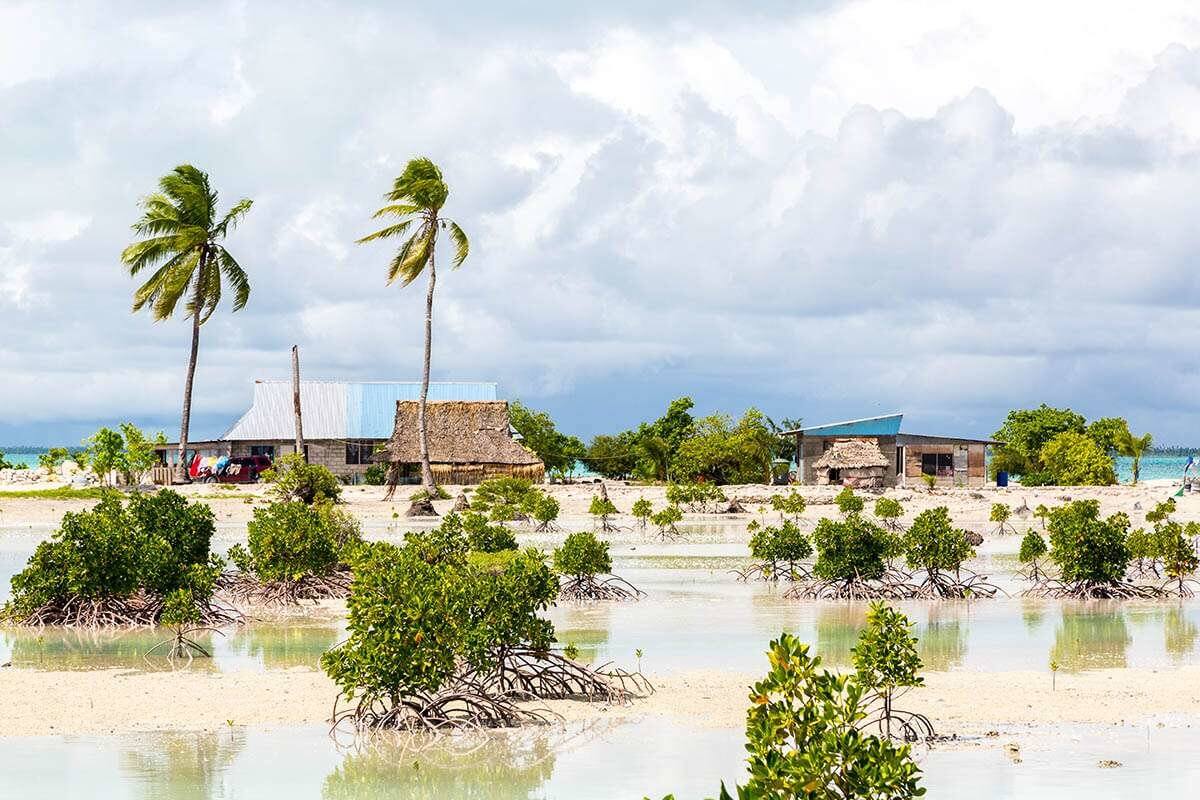
Last resort
Putting aside the difficulties of establishing who exactly is and isn’t a climate refugee, there’s often an unspoken assumption within such forecasts that millions of people in the world would be content to pack up their belongings and hit the road as soon as life gets tough; an assumption that the detrimental impact of climate change will be the trigger that provides the excuse – and perhaps the mechanism – to opt for a new life elsewhere. This, too, is a perspective with a nuanced and complex reality.
‘You don’t want to romanticise poverty and you don’t want to minimise the structural constraints on the poor in rural settings – but most people don’t really want to leave,’ says Adams. ‘There are all sorts of emotional and behavioural reasons why people want to stay where they are.’
Carol Farbotko is a research scientist at the Commonwealth Scientific and Industrial Research Organisation in Australia. She conducts cultural fieldwork in the South Pacific, primarily in Tuvalu, a low-lying island nation highly vulnerable to rising sea levels, to understand the psychology of people who face these looming threats. ‘The strong feeling that you get from the people in Tuvalu is this real sense of, “We don’t want to go anywhere’,’’ she says. ‘They know the risks and their response is: “We need to figure out a way to stay where we are. Because this is our home, this is where our ancestors are, this is where we want to be long term”. There’s no sense of, “Oh, my goodness, if only we had somewhere to migrate to we’d be fine”. That just doesn’t exist on the ground in these places.’
For many vulnerable people, adaptation is the desired path, which may involve reclaiming land, constructing defensive barriers or safeguarding vital resources such as freshwater. Farbotko references an ongoing construction project in Kiribati, another vulnerable island nation, that aims to build a ‘resilient urban development’ capable of protecting 35,000 people from rising sea levels at least until the year 2200. ‘People are very aware of climate change, very aware of the future risks, very hopeful that the international community will get their act together on emissions,’ she insists. ‘But also increasingly hopeful that there will be on-the-ground adaptation that fortifies the islands to enable them to live there as long as possible. These governments see any sort of relocation or migration internationally as the last resort.’
Tracking movements
Nevertheless, the long-term impacts of climate change are likely to be severe and, as such, it isn’t unreasonable to assume that numerous people will move as a consequence. As robust as the determination of many people to stay and adapt will be, some form of migration will be a necessary response for millions.
‘It’s not a hypothetical phenomenon – it already happens,’ says McLeman. ‘Right now, people are displaced on a regular basis across the world because of weather-related events, the most common ones being floods and extreme storm events, followed by droughts, wildfires and other heat-related events.’ He quotes the latest figures from the Switzerland-based Internal Displacement Monitoring Centre, which revealed that last year saw 23.9 million people become globally displaced due to weather-related disasters – three times the number displaced by conflict or violence.
However, this amount of weather-related displacement doesn’t necessarily mean that millions of people are making the extreme leap into refugee camps or fleeing to other countries. Instead, climate-related migration typically manifests itself in the form of internal movement within countries: ‘An awful lot of very regional moves and very local moves’, as Adams describes it.
A high-profile report published in 2018 by the World Bank called Groundswell, attempted to produce forecasts specifically for this internal movement. The headline figure stated that, by 2050, sub-Saharan Africa, South Asia and Latin America could together see as many as 143 million people internally displaced due to the effects of climate change. This was the upper estimate of a worst-case scenario, with the opposite end of the range – the lower estimate corresponding to a more climate-friendly scenario – forecasting 31 million internal migrants.
But these numbers are also complicated. For example, in Bangladesh, a country recently hit by heavy rains and floods in the aftermath of ‘super cyclone’ Amphan, half of the land area is less than ten metres above sea level. The Groundswell report projected that the country will contribute around a third of South Asia’s internal migrants by 2050 under the worst-case scenario – more than 13 million people.
Ingrid Boas from Wageningen University describes the results from fieldwork she conducted with threatened communities in Bangladesh. ‘A lot of people who are affected and are losing their houses are constantly moving a bit more inland, then five metres again, five metres again,’ she explains. ‘Those people are the most affected and they don’t have a lot of resources to move away. But they do move, in very small steps. How is that captured by the modelling?’
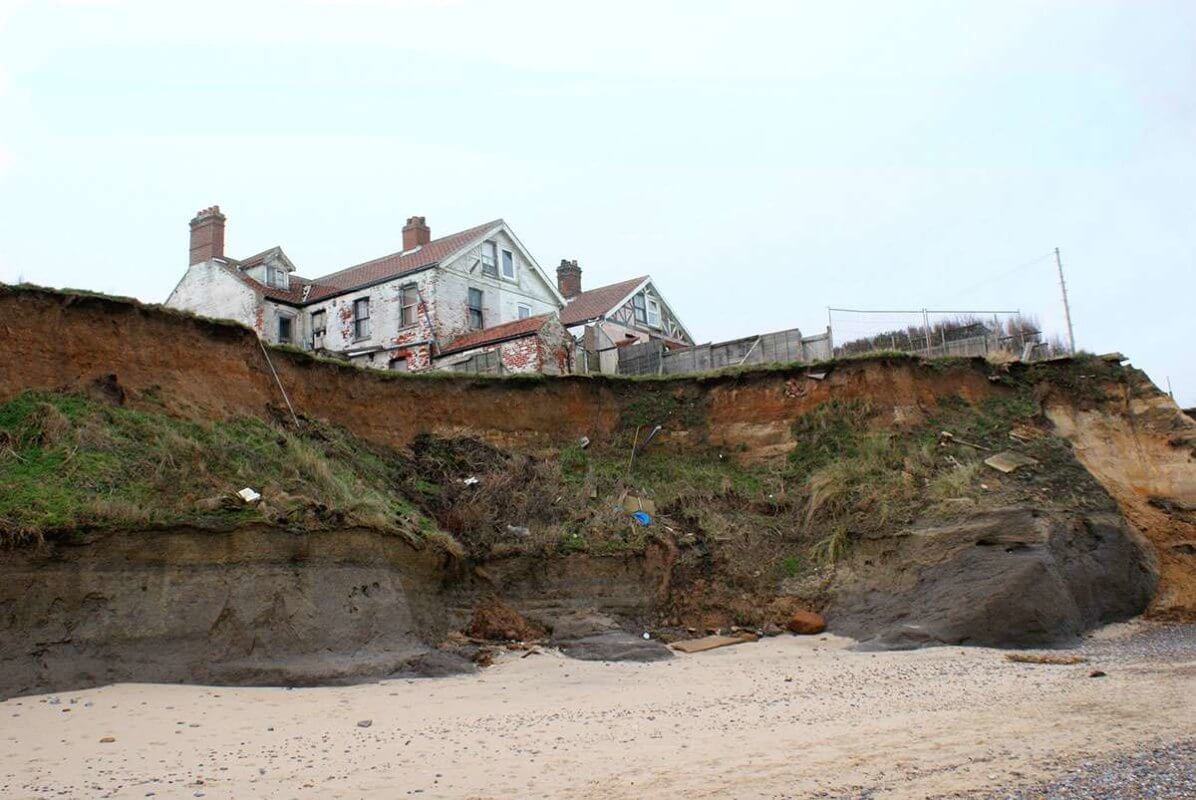
Developed nations
‘We tend to think of climate change as what happens to other people in other countries – typically poor, low-income countries, troubled countries, politically unstable ones,’ says Professor Robert McLeman from the Department of Geography and Environmental Studies at Wilfrid Laurier University in Ontario, Canada. ‘But if you look at the Internal Displacement Monitoring Centre statistics, a lot of them are in places like the USA.’
For example, you can find Iñupiat communities in Kivalina, an Indigenous village in Alaska, who are having to prepare to move elsewhere due to forecasts showing the likely inundation of their homes by rising sea levels, a far slower moving form of environmental change that nevertheless forces relocation. Similarly, in the UK, the residents of Fairbourne, in Gwynedd, north Wales, have less than 35 years to vacate their village before the council abandons it to the encroaching waves. Happisburgh and many other Norfolk villages have long experienced the sinking feeling of seeing the coastline tiptoe ever closer to their back doors, with many properties now lost to the sea.
‘The advantage that European countries and Americans have is that we have the wealth to build adaptive capacity,’ continues McLeman. ‘We can build sea walls, we can divert rivers, we can organise resettlement of people in small villages in Wales if they can no longer do so. Whereas in a place like Bangladesh, or a small island state in the Pacific, the resources just don’t exist to do that.’
Finding refuge
Yet internal migrants don’t always stop at borders. Groundswell notes that its own modelling ‘identifies numerous migration hotspots in areas close to national borders’. In some vulnerable locations, there may be nowhere else to go. It’s in those places that people might start looking beyond their own countries.
In March 2017, a family from Tuvalu – taking up that ‘last resort’ strategy described by Farbotko – discovered that the application they had filed for refugee status in neighbouring New Zealand had been denied. Despite the evidence presented – that climate change made their lives in Tuvalu unsustainable due to a ‘lack of clean water and proper sanitation’ – it was decided that such a scenario didn’t meet the definition for refugee status, as laid out in the 1951 Refugee Convention.
‘One of the challenges that you face is that no country grants asylum on the basis of environmental displacement,’ explains McLeman. ‘You cannot use the UN Refugee Convention to make a claim for asylum on the basis of climate or environmental displacement because the convention only looks at people displaced for political reasons: persecution, violence and so on.’ The 1951 convention defines refugees as those in fear of being ‘persecuted for reasons of race, religion, nationality, membership of a particular social group or political opinion’. Perhaps to be expected for a document that was drafted in the aftermath of the Second World War, there is no mention of the environment or a changing climate.
‘The convention is quite specific as to who is a refugee; that’s quite clearly defined,’ agrees Shabia Mantoo, a global spokesperson for international protection, statelessness and internal displacement for UNHCR, the UN Refugee Agency. However, she argues that anyone forcibly displaced for environmental reasons should be eligible for the same protection as a political refugee. ‘If you do flee across borders, and you’ve been forced to flee your home because of climate-related factors, you should still be protected and assisted by international law,’ she says.
UNHCR is already involved in many situations involving people impacted more by environmental than political factors. In recent years, it has been on the ground in Mozambique and neighbouring countries hit by Cyclone Idai, in Yemen in response to flooding events, and in the Bekaa Valley in Lebanon after severe storms. ‘UNHCR are a big player when it comes to climate migrants because they’re always there after climate disasters when they shouldn’t be,’ observes Adams. ‘UNHCR should not be there when there has been a flood – that’s not their mandate. But they’ve unofficially already expanded their mandate to take that into account.’ The agency’s annual Global Trends report for 2019 specifically mentioned, for the first time, the impact of ‘climate change and natural disasters’ as factors that can ‘force people to flee within their country or across international borders’.
Mantoo emphasises that a changing climate is a growing threat to people displaced for whatever reason, especially those now living in precarious situations. ‘We’re seeing that the consequences of climate change are having a huge impact on people who are already displaced,’ she explains, pointing out that many people the organisation helps are now experiencing secondary displacement. ‘When you look at the fact that 85 per cent of refugees are being hosted in developing countries, many of them are highly climate vulnerable or on the frontlines of climate change. It’s compounding humanitarian needs, it’s exacerbating vulnerabilities, and in some situations, also forcing people to move again.’
It begs the question of whether the Refugee Convention needs to be updated to grant ‘environmental refugees’ official legal status. However, that isn’t a universally popular idea. ‘There is a lot of discussion and debate about whether we should have a treaty or agreement to assist people who are displaced for climate-related reasons,’ says McLeman. ‘But you get pushback from a bunch of different directions.’ He explains that both refugee-hosting countries, such as Kenya and Turkey, and countries politically resistant to high immigration, such as the UK, the USA and Australia, resist the idea that anyone affected by climate change should be defined as a refugee.
In addition, even non-governmental actors working in this arena can be wary. ‘The NGOs and multilaterals who work with refugees often say: “Look, we’ve already got more than 20 million refugees around the world. We can’t look after this group of people who have been displaced by conflict and now you want to expand the definition to include more people? Let’s not go there.’’’
Syria
Of the many narratives swirling around the now decade-long Syrian civil war, one theory referenced by everyone from Barack Obama to Prince Charles relates directly to climate change. It proposes that the conflict stemmed in a significant way from an exceptional and pervasive drought in the Fertile Crescent that struck in the winter of 2006–07, a natural event made two-to-three times more severe by the influence of climate change. ‘The severity of that recent drought is well outside of what has occurred naturally over the past 900 years in the eastern Mediterranean region, strongly supporting the contention that human influence on the climate system is likely to blame,’ says Colin Kelley, an associate research scientist at the International Research Institute for Climate and Society at Columbia University. Resulting in widespread crop failures, it led to the mass migration of an estimated one-and-a-half million people from rural areas to the overcrowded cities. This population of politically and economically restless migrants then formed the heart of the uprisings against the Assad regime in early 2011.
An opposing view disputes this hypothesis. Jan Selby, a professor at the University of Sheffield, insists that the extremity of the drought can be attributed to structural problems, including the degradation of water resources, not climate change. He argues that there is no clear evidence of this large-scale migration and that generally there’s little to support the theory that climate change played a major role in triggering the uprising. ‘There’s a repeated history of Western policymakers, media, NGOs and public intellectuals exaggerating the impacts of climate change on conflict,’ says Selby. ‘I’m deeply concerned at how climate-migration and climate-conflict narratives are already being taken up by the far right. Eco-fascism is on the rise and the myth of climate migration is absolutely central to this. It’s in this sense, in my view, that climate migration and conflict narratives are most worrying.’
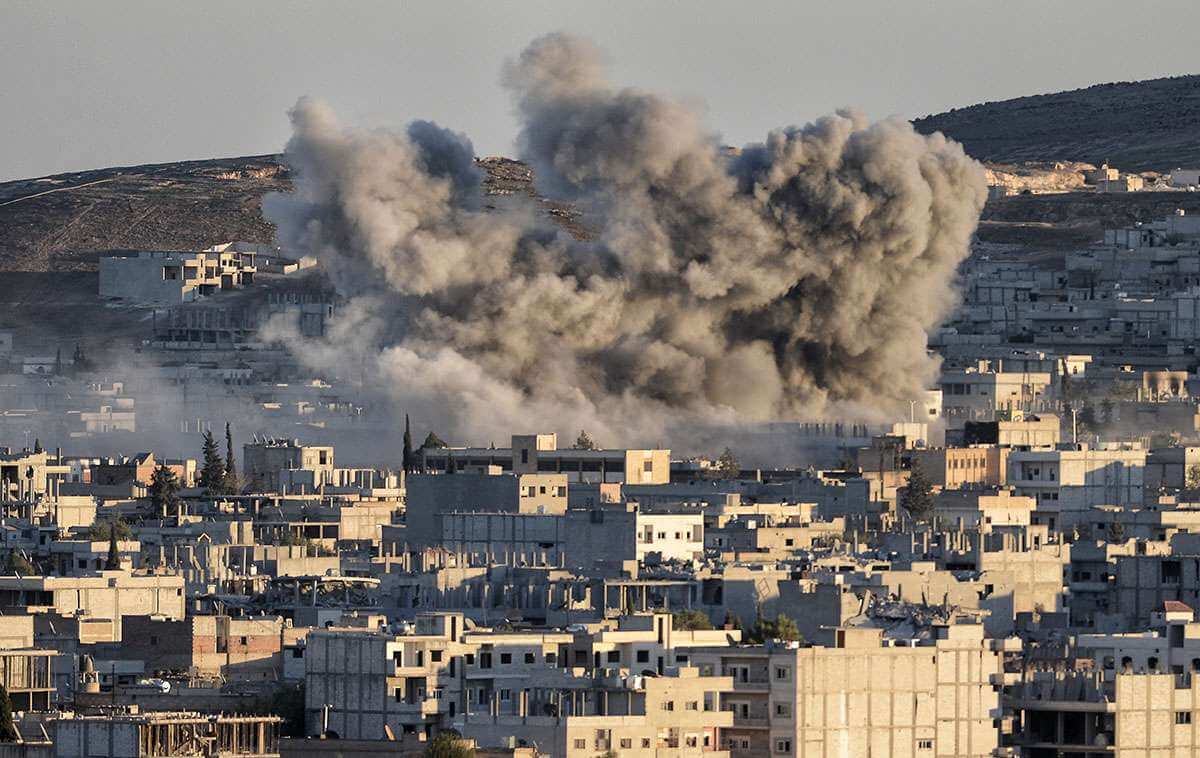
Following the failed Tuvalu applications, James Shaw, New Zealand’s minister for climate change, fl oated the idea of the country creating a special humanitarian ‘visa’ to ease passage for people from their island neighbours whose livelihoods have been lost due to climate change. It wasn’t the first time such an idea has been put forward – for example, it has gained some traction in Germany, inspired by the so-called Nansen passports given to stateless people after the First World War – but it was perhaps the closest it had yet come to becoming a reality.
‘I don’t really see a reason why we couldn’t have a visa for climate refugees, if climate change is a clear factor,’ says Boas. ‘My main worry is that while this may be a solution for some – and may indeed be needed for some, for instance with areas that are really becoming uninhabitable – many others need a different type of support. This visa might be a solution for some people, but not for a lot of people.’ The New Zealand government has since rowed back on Shaw’s comments, saying that it’s now focusing on adaptation and has no plans to create any such visa.

Moving past scaremongering
International co-ordination on migration does appear to have taken a step forward in recent years. The Global Compact for Safe, Orderly and Regular Migration, an agreement finalised in 2018, is the first comprehensive UN document to specifically cover international migration. It lists ‘the adverse effects of climate change and environmental degradation’ as being among the reasons why people might wish to migrate. ‘The compact has explicit suggestions on how to go forward on managing people displaced for climate-related reasons,’ says McLeman. ‘But, it’s a voluntary document.’
Not only are the practices outlined in the document entirely voluntary, but, in keeping with their hardline political rhetoric, a number of countries that have grown increasingly hostile to migration – among them the USA, Hungary and Poland – chose not to sign up to it at all. There’s clearly a long way to go before it becomes a global standard. ‘In theory, the mechanisms exist, but in practice, nobody wants to implement them,’ says McLeman.
Nevertheless, perhaps a combination of the multilateral agreements already in existence might allow help to flow to those who most need it in the face of climate change. ‘The fact is, you’ve got climate change in the Paris Agreement and migration in the Sustainable Development Goals – I think you’re starting to see migration in all these climate- and environmentally related multilateral agreements,’ says Adams. ‘I think the compact goes with those. You’re creating this consensus that we need a migrant- driven approach. But, it remains to be seen what countries actually do.’
McLeman emphasises the extent to which many of the popular narratives about climate refugees – all those hysterical newspaper headlines – are now overwhelmingly about security; about placating the fears that many people who live in wealthy countries have about waves of foreigners banging on their borders, regardless of whether or not those fears are based on reality. These narratives manifest themselves through, for example, European policies designed to strengthen Mediterranean ports in response to the refugee crisis of 2015, as well as in the ongoing debate around the fortifi cation of the border between the USA and Mexico.
‘The evidence on climate change as a factor in migration to Europe and North America is incredibly weak,’ insists Jan Selby, professor of politics and international relations at the University of Sheffi eld. ‘Not only is there no evidence that climate change is the main factor – I don’t think there’s trustworthy evidence that it’s a factor at all. Indeed, I’d go so far as to say that climate-migration narratives are basically rooted not in evidence, but in racism.’ All those headlines should perhaps be taken, at best, with a pinch of salt, at worse as a form of scaremongering.
The legacy of Myers lives long in the memory. The prospect of hundreds of millions of refugees might grab attention, but the reality is far more complex than these figures suggest. No-one seriously disputes that the impact of climate change will be severe, but the mobility of people who do use migration as a way to adapt will likely be very diff erent from the simplistic, security- focused narratives that make it into the headlines.
‘Basically, most of the people who are going to be affected by climate change won’t be able to move at all,’ says Adams. ‘But it doesn’t matter how many times you or scientists or researchers say: “Look, most people won’t move, the people who do move will move within their own country, the people who do move outside the country will move to the country next door.” There’s still this fear that millions of people are going to move.’



